A drop swirl cold process soap design is one of my favorite swirls to create! I feel like it is an easy swirl if you are new to swirling soap. This color combo makes a nice soap for Valentines or for Spring! I love how it turned out! Here is how I did it!
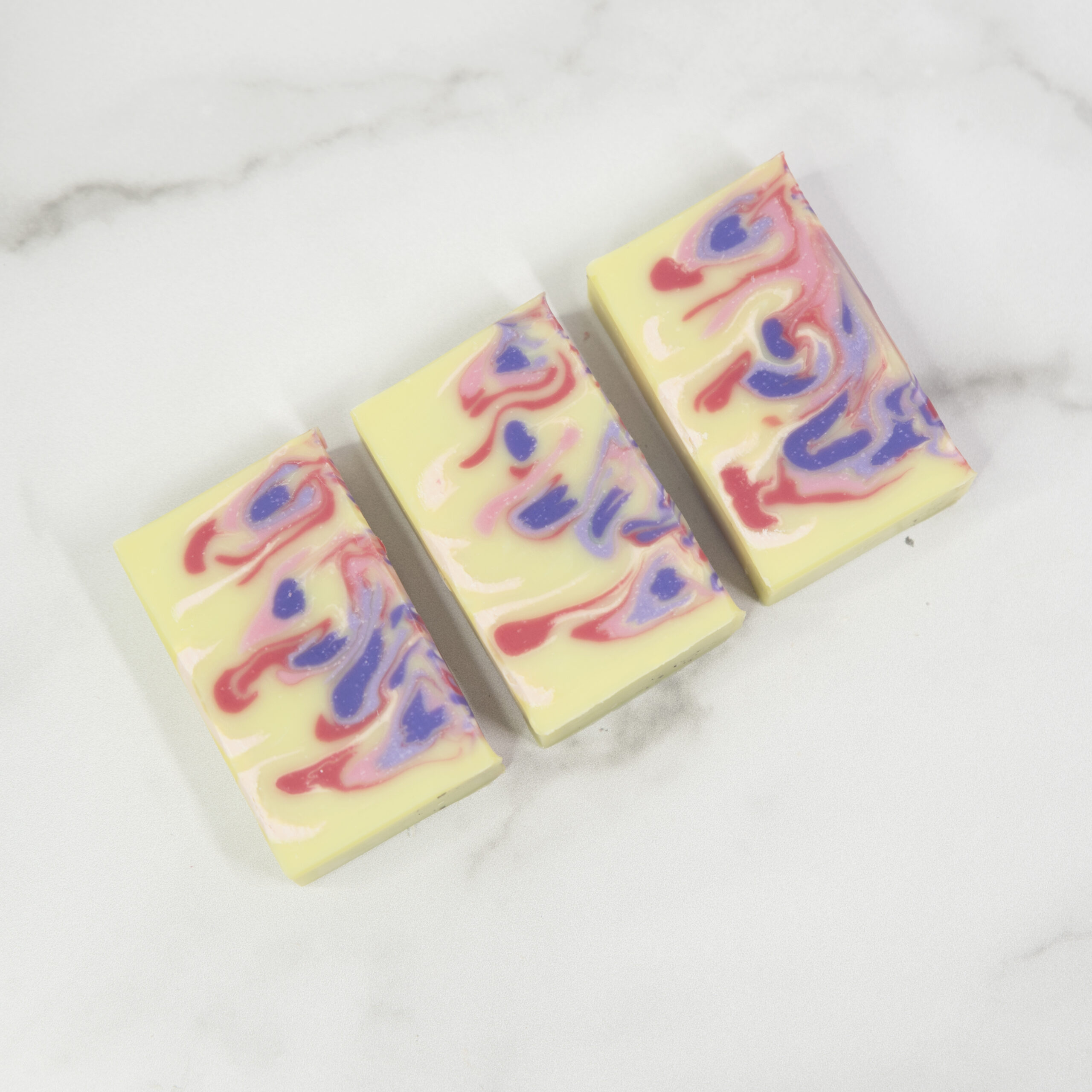
(Disclosure: Some of the links below are affiliate links, meaning, at no additional cost to you, I will earn a commission if you click through and make a purchase.)
I used a 10″ Silicone Loaf Mold from Nurture!
Pink and Purple Drop Swirl Soap Design
Basic Body Bar – More Moisture from Lovin Soap Studio Recipe eBook (Grab your copy for 50 cold process soap recipes + 64 essential oils blends!)
Base Oils
- Coconut Oil (76 degree) – 270 grams (30%)
- Shea Butter – 90 grams (10%)
- Olive Oil – 342 grams (38%)
- Avocado Oil – 72 grams (8%)
- Rice Bran Oil – 126 grams (14%)
Lye Solution
- Sodium Hydroxide – 126 grams (5% superfat)
- Water – 252 grams (1:2, lye:water ratio)
Scent
Use your favorite slow-moving fragrance or essential oil blend. I simply used a blend of lavender and litsea essential oils. If you’re looking for a good place to get essential oils, I HIGHLY recommend Appalachian Valley Natural Products. I love their products and their shipping is super fast!
- Lavender Essential Oil – 15 grams
- Litsea Essential Oil – 15 grams
Colors
- Blush It Off (Muddy Micas)
- Pow Pow Purple (Mad Micas)
- Champagne (Mad Micas)
- New Leaf (Nurture)
- Winter White Mica (Nurture)
Let’s make soap! If you are new to soapmaking, be sure to download our free guide, How to Make Cold Process Soap! Gear up in your gloves and your safety glasses.
Step 1: Create a lye solution. Weigh the water and lye into two separate containers. Slowly pour the sodium hydroxide into the water while stirring. Stir until completely dissolved and set aside to cool.
Step 2: Prepare the base oils. First, weigh any solid oils and butters into a container and melt. You can melt using the microwave or low heat on a burner. Next, weigh each liquid oil into the melted oils. The liquid oils will cool down the melted oils and leave you with a base oil mixture that is about at the correct temperature to make soap. It might still need to cool down a bit.
Step 3: Weigh your slow-moving essential oil or fragrance oil into a glass or stainless steel container and add to your base oil.
Step 4: Prepare your mold. If you need to line your mold, line it.
Step 5: Check the temperatures. You should now have a container containing liquid base oils and a container containing lye solution. Take the temperatures using an infra-red temperature gun. Be sure to stir each mixture before taking the temp. You want your temperatures to be between 80-100 degrees F.
Step 6: Once you have reached desired temperatures, pour the lye solution into the oil mixture and mix to emulsion.
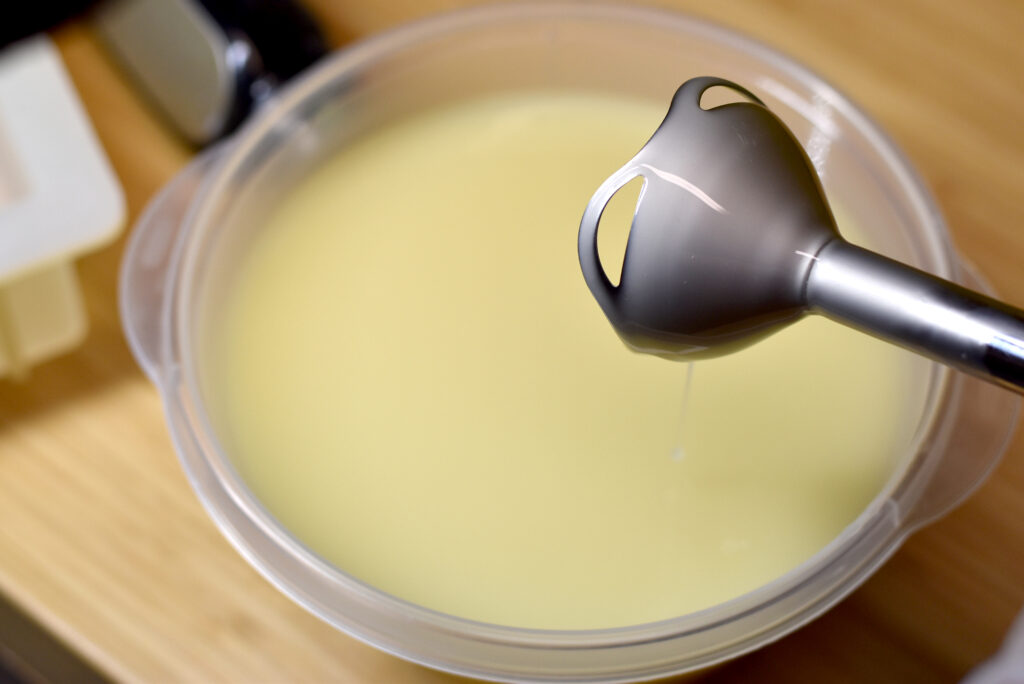
Step 7: Once emulsified, divide your soap to color. I left half for my base and divided half into 5 cups to color.
Step 8: Add colorant and mix.
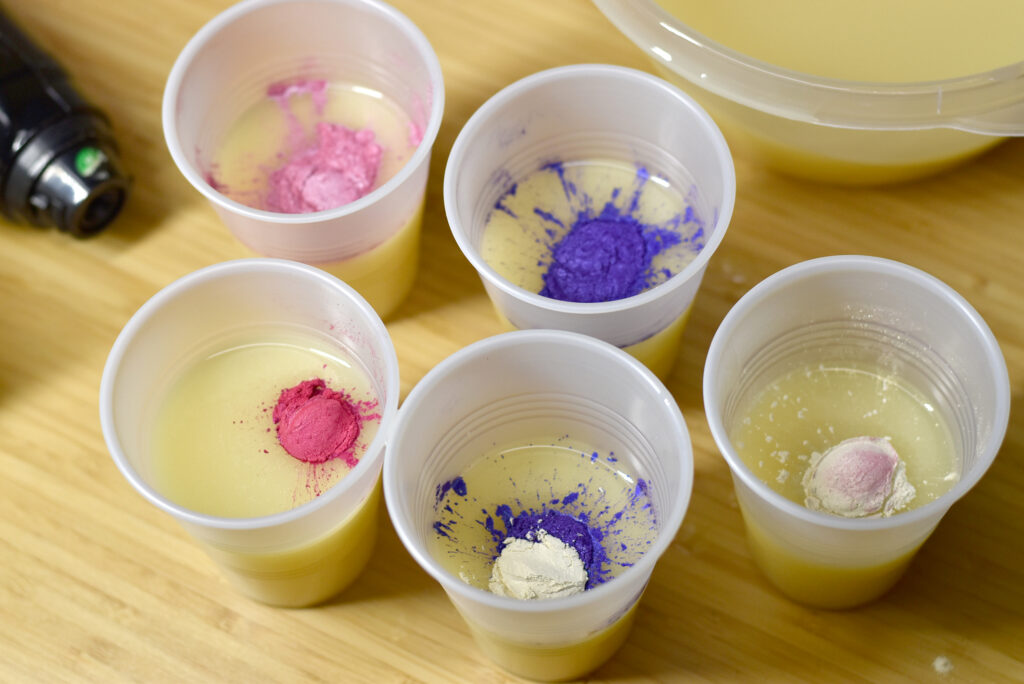
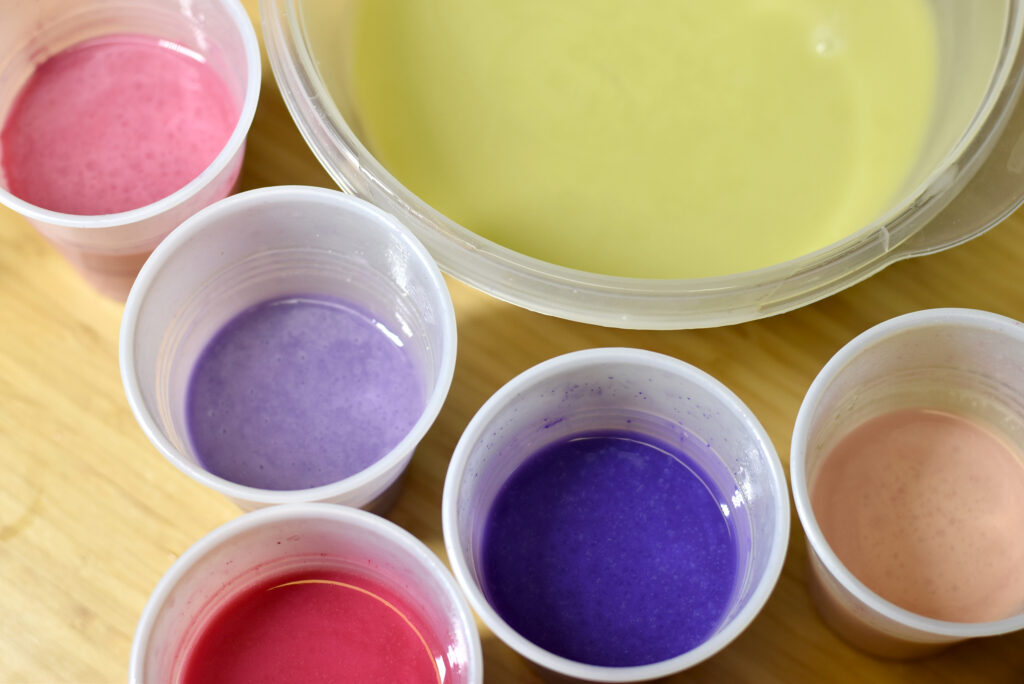
Step 9: Pour your base into the mold.
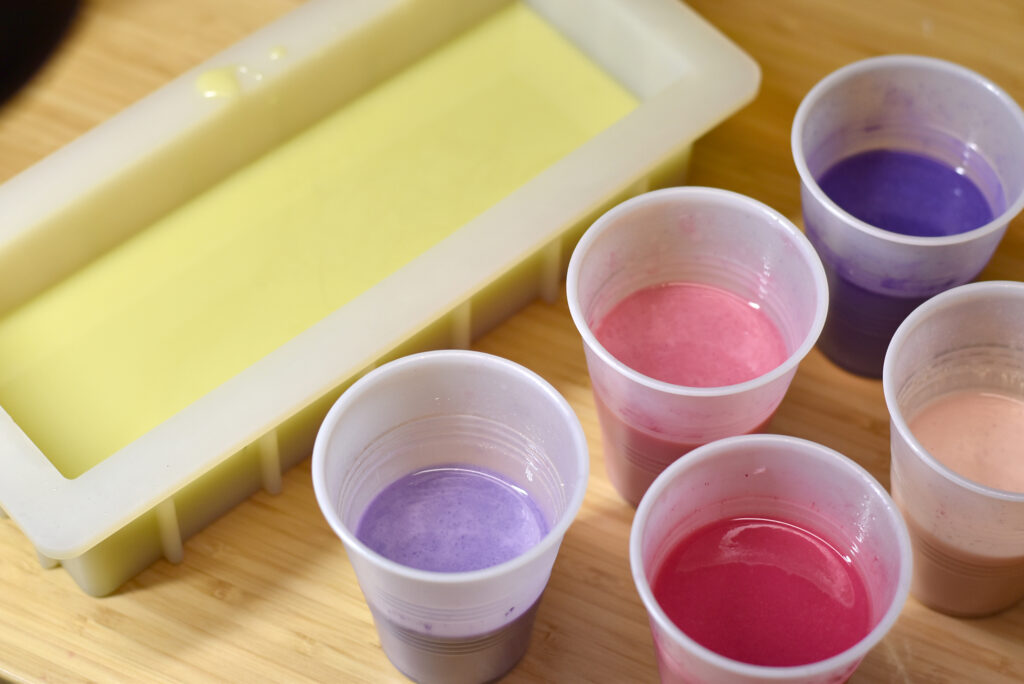
Step 10: Rotating through each color, pour into the base soap. Run your cup along the length of the mold to ensure that each bar has colored soap.
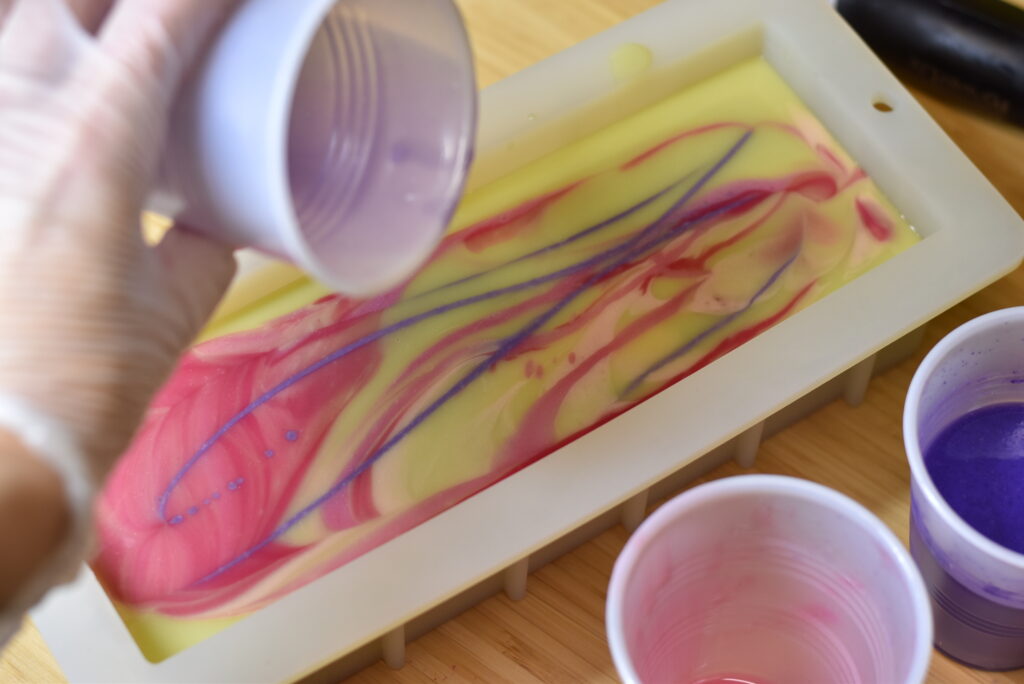
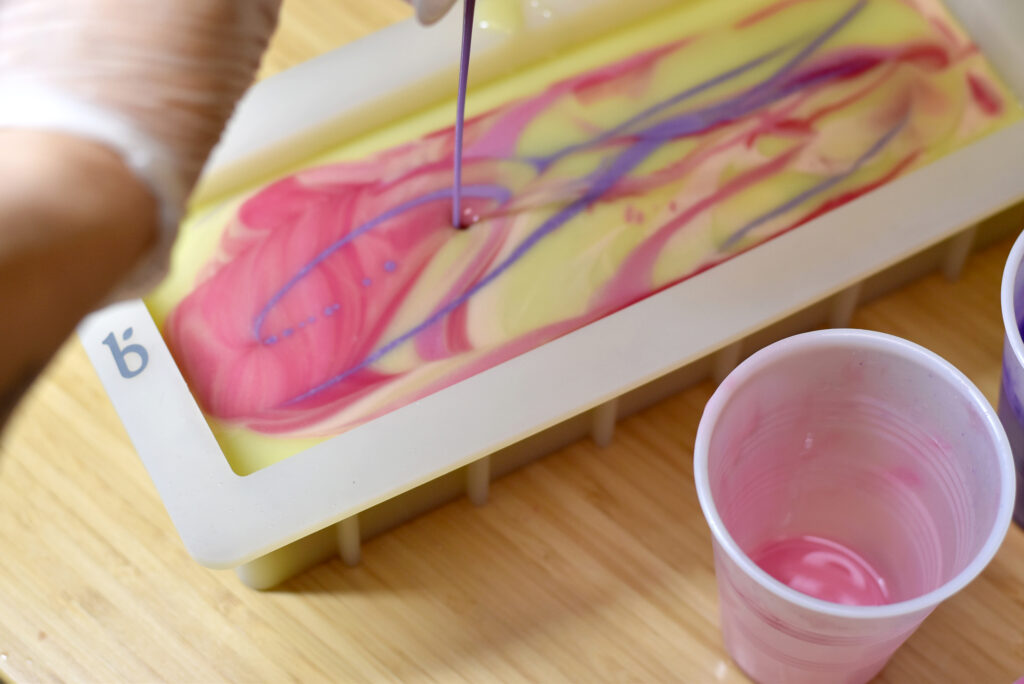
Hold your pouring cup up high to make the soap dive deep into the base. Hold your cup down low to allow the soap to fall gently on the surface.
Check out the video!
Step 11: Swirl the top of the soap with a skewer. Allow your soap to sit for about 10 minutes and spray with alcohol to combat ash. Spray again after an hour.
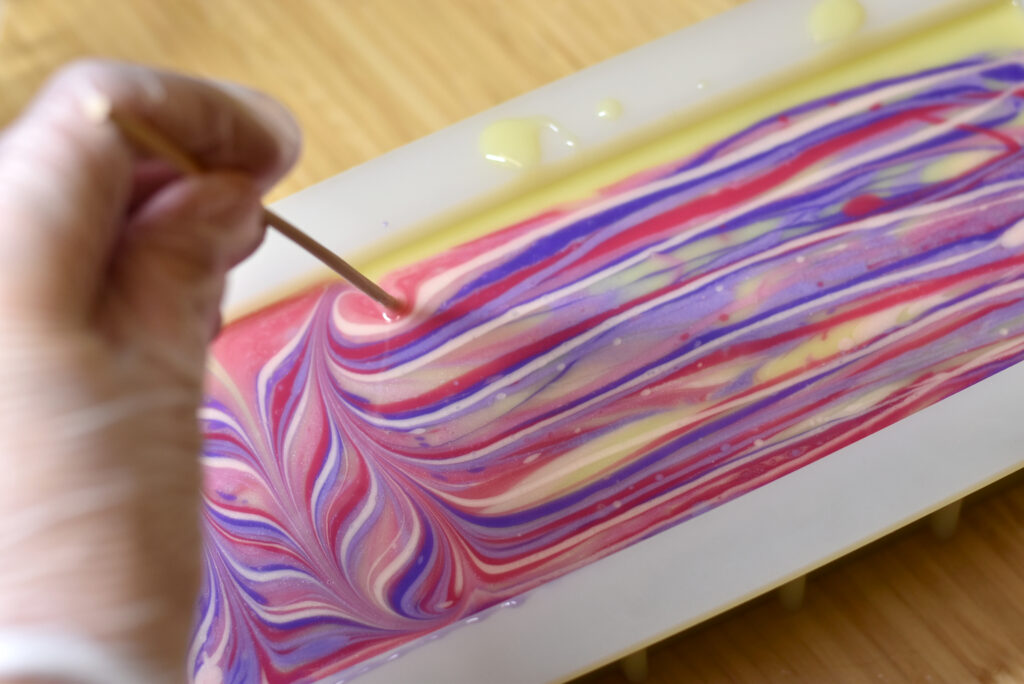
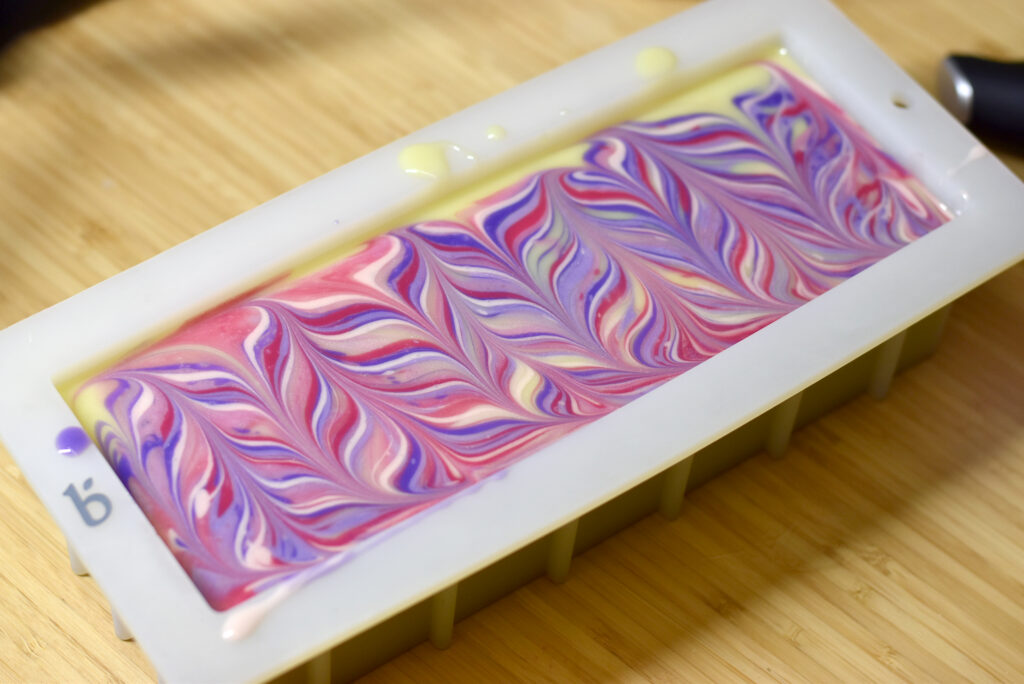
Step 12: Allow your soap to saponify and harden for at least 24 hours. After 24 hours, you can unmold and cut. Cure your soap for 4-6 weeks.
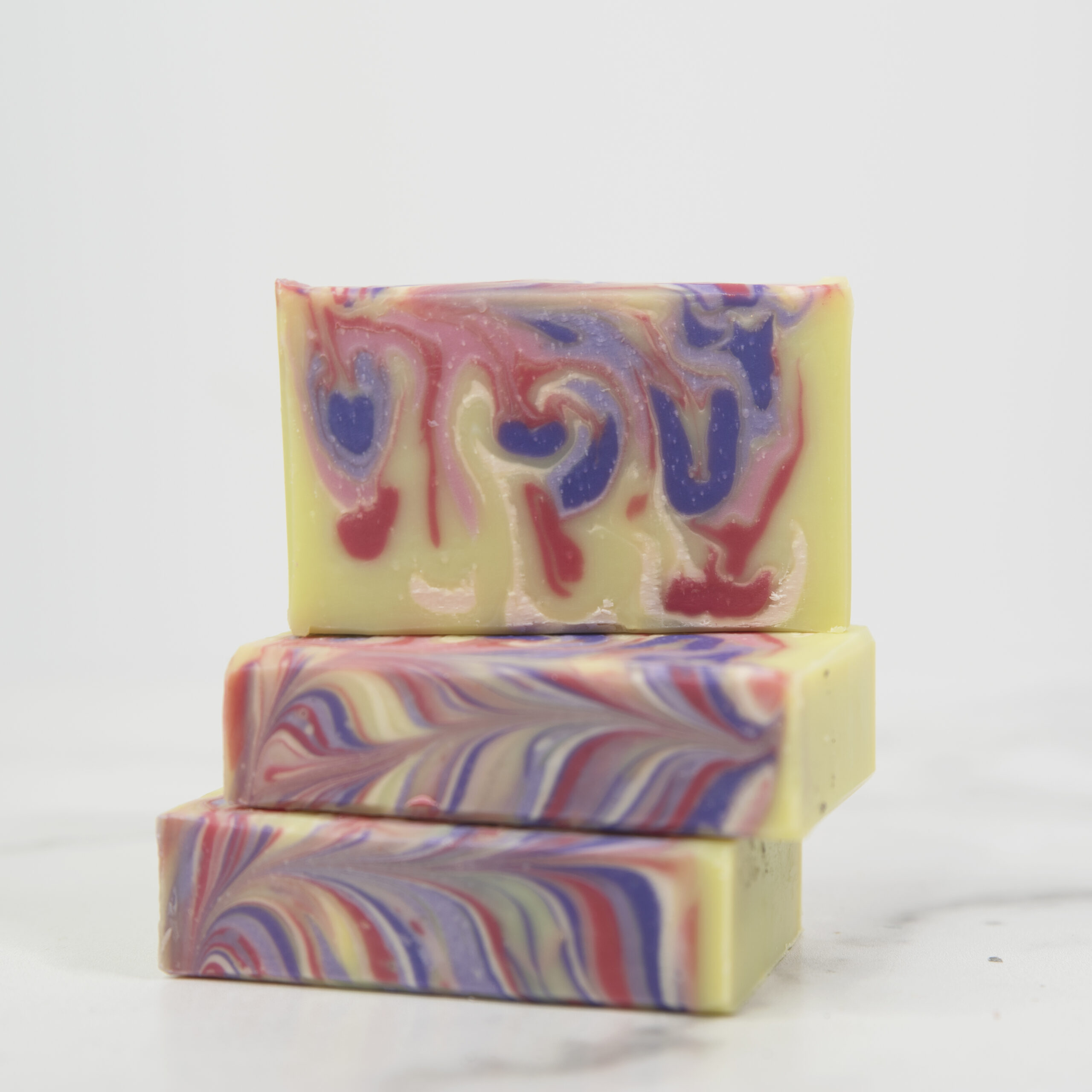
Thanks for reading!
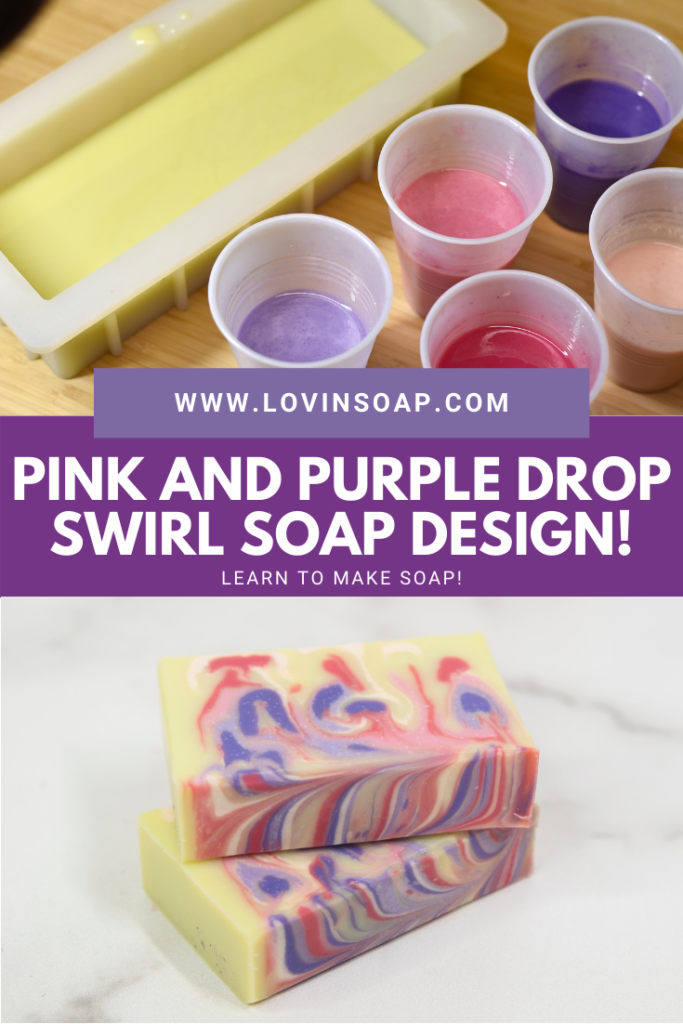
Grab our new eCourse, Swirling Success!
Learn to control trace, so it doesn’t control you!
This detailed video training explores the difference between emulsion and trace, so you know when to stop mixing your soap, allowing enough time to color and execute intricate designs. You’ll leave the eClass with a greater understanding of how water/liquid, temperatures, base oils, fragrance oils, essential oils and additives all affect the movement of your soap to trace.
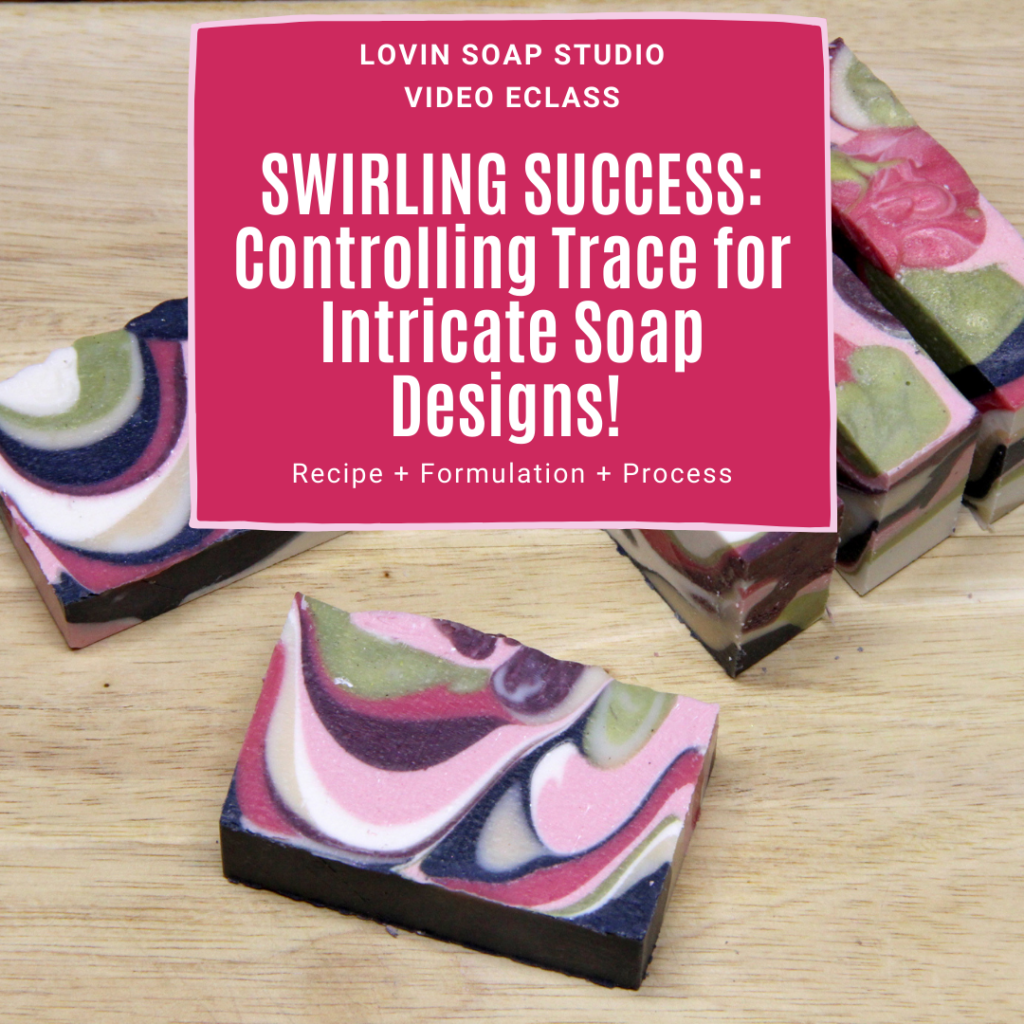


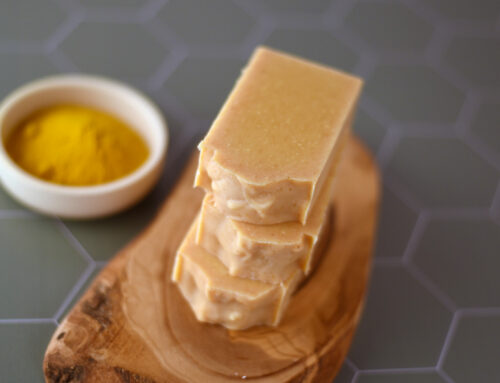
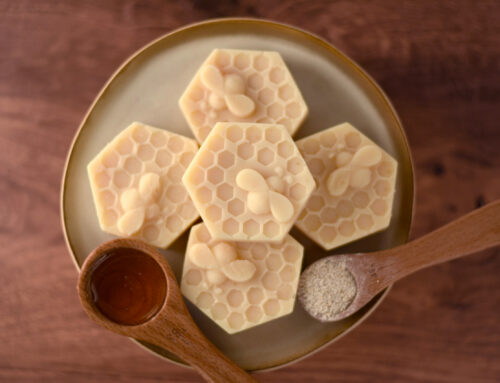
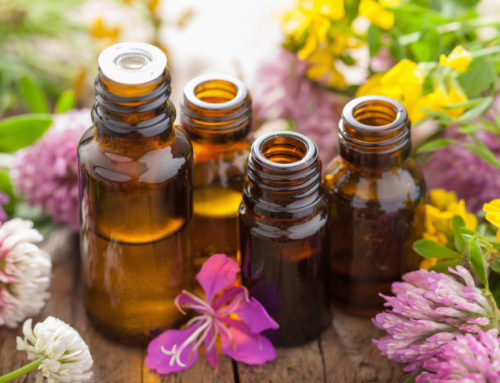

Beautiful instructions and video. You are so clean in your prep and video I would love to learn more about how can I do this with HTHP. Thanks for your inspriration!
Hi, I followed your recipe but I think I blended a little to long. My colors did not pour so I scooped them in and it turned out to be beautiful. I pulled my scooped colors through with a stainless steel straw and and swirled the top and WOW! I love how it turned out. Thank you for all that you do to help us make better beautiful body essentials. Your recipes are so easy to follow. I did change the fragrances to Coconut Lime, Lime and Lavender, it made the most beautiful smell, I keep checking the soap loaf as it cools to make sure the scent is still there. It is!
I love this technique and colors. I know you post mostly vegan or palm free recipes but I’d love to see some lard recipes. I find lard is amazing in soap. Much love and I hope you all have a blessed New Year!
I made my first-ever drop swirl soap this Christmas—your Apple Cider ???? recipe. It turned out SO BEAUTIFUL! Thank you for your expertise and for sharing it online! Looking forward to making more! And to the drop swirl e-course!
Question: where does one buy that tool with the straight pins to create one of the other swirl designs?